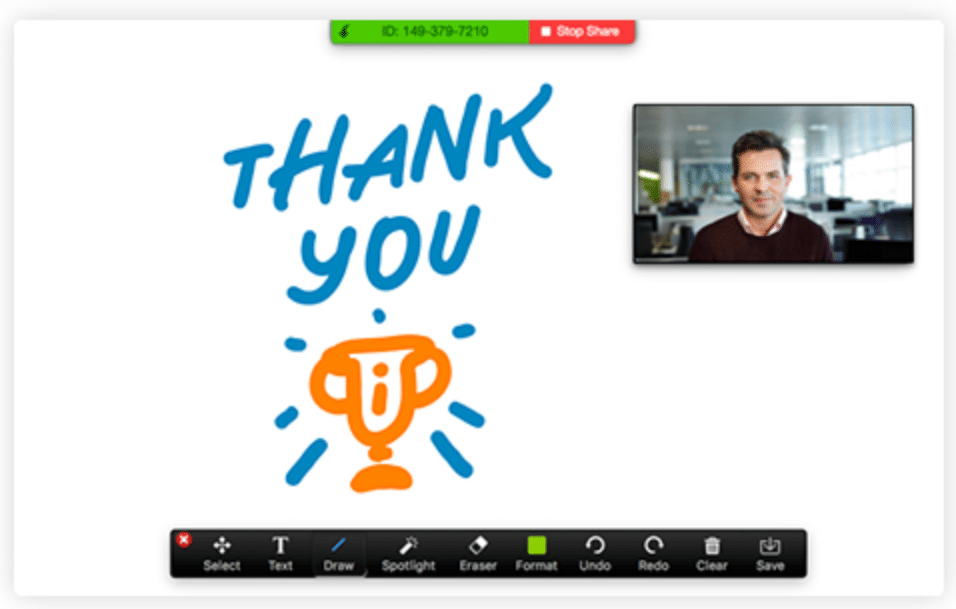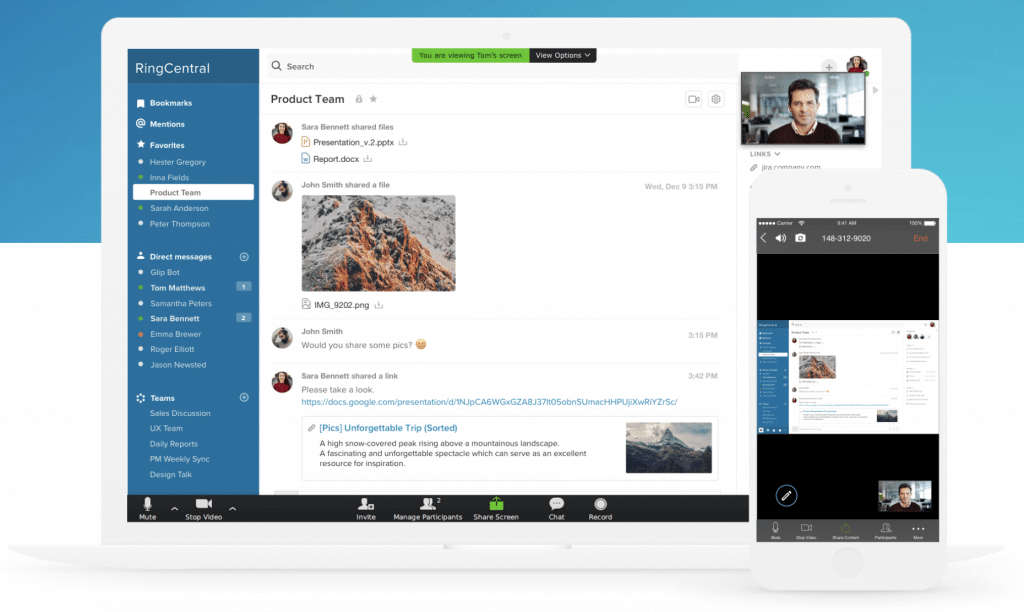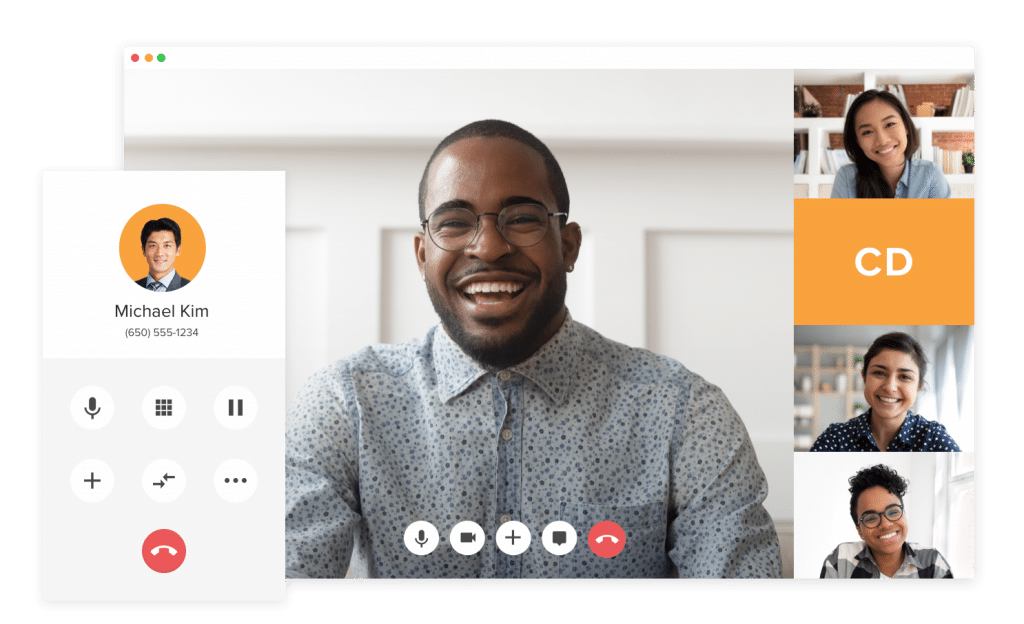The internet is changing almost every aspect of our lives.
If you have access to the right technology, you can talk to your doctor, get groceries, and have important meetings—all without ever leaving your home. And now, education is another sector that is increasingly becoming digitized.
In this article, we’ll look at:
Keep reading to learn about the advantages of e-learning for students, teachers, and parents and how the right tools can change the face of education—for the better.
👀 Shopping for an online meeting platform? (Or just curious about what to look for?) Grab the free checklist to help you choose the right one for your business.
What is e-learning?
First, let’s take a closer look at what e-learning actually is.
E-learning is a style of education where course information is presented online instead of a traditional classroom.
This can be implemented in elementary school, all the way up to the master’s and PhD levels. Students can complete modules, take quizzes and tests, submit assignments, and listen to lectures and peer presentations—all online. Magic.
E-learning can be divided into two models:
1. Synchronous e-learning
Classes happen at the same time, for everyone. Synchronous learning is the model that’s most similar to traditional classroom learning. You log in to whatever video conferencing software you’re using, watch lectures and presentations, and have conversations in real time.
Synchronous e-learning is great for students (and teachers) who are just starting to transition to online platforms since it replicates a classroom so closely. It also helps students (and teachers!) stay accountable and on track, since everyone shows up at the same time.
Lastly, real-time communication with everyone and seeing each other’s faces—even if it’s through a screen—can help students and teachers feel more connected and engaged.
On the other hand, synchronous learning does have some drawbacks. You absolutely need the right software. Laggy video chat platforms will cause massive delays, not to mention headaches—and embarrassment when the teacher or professor is trying their best to get everything sorted out.
Synchronous learning is also not very flexible. Teachers and students have to commit to being online, on the same platform, at the same time. If you have other obligations—work, kids, household duties, etc.—those will have to be put on hold while you’re in class. Everyone’s schedule has to line up at the same time, and that can be difficult to achieve.
2. Asynchronous e-learning
Basically, in asynchronous e-learning, classes and learning activities happen at different times.
A typical online discussion board is a good example of asynchronous learning. Students can listen to pre-recorded material, work through modules, and contribute to discussions at their own pace.
One of the main benefits of asynchronous e-learning is that it’s super flexible. A student can
work on their course at whatever time is best for them, whether it’s during normal school hours or at midnight during breaks while playing Fortnight.
This is especially great for students who have different needs—they can take their own time working through the course, instead of moving along at the exact same pace with everyone else.
Also, students can download content ahead of time, which means they don’t need to be online to listen to their lectures or do readings. With synchronous e-learning, you have to always have a solid Internet connection.
So, where are we at with e-learning?
Just like remote working, e-learning is becoming pretty popular. Take a quick look at some of these stats:
- Forty-nine percent of post secondary students worldwide have taken an online course in the last year.
- About 58,000 high school students in Ontario, Canada, took an online course between 2017 and 2019. Enrollment has increased by about 17% a year since 2011.
- Forty-three percent of college students in the US say that e-learning is “extremely helpful” and can reduce drop-out rates.
- E-learning can reduce energy consumption by 90% and carbon emissions by more than 85%.
More and more public education systems are allowing students to opt out of regular classes and do e-learning instead—some school boards even require e-learning to graduate.
Although to be fair, there are some criticisms of e-learning, it’s quickly becoming an important part of the future of education.
How can you use technology to create a great e-learning experience?
Let’s look at some ways that technology can improve e-learning, which improves the lives of teachers and students.
1. Video conferencing lets students attend class—from anywhere.
As great as asynchronous e-learning is, it’s unlikely that we’ll be able to get to 100% asynchronous e-learning anytime soon.
As of today, there are still not many ways to learn that are better than being in a class with the teacher and other students.
But video conferencing adds a layer of convenience to this style of e-learning. You can still cut down on commute times for students and teachers, and you get to keep that real-time face-to-face interaction for the whole class.
If for whatever reason it isn’t feasible to have a class with everyone in the same space physically, video conference calls are a good option to facilitate e-learning.
For example, RingCentral Video lets you schedule meetings and send invites to students using a link that they can then use to join. All they’d have to do is download the app from the App Store, and students can join a class from their computer, phone, or tablet:
2. Boost tech fluency.
One of the main selling points of e-learning is that it teaches more than just the curriculum—it teaches students and teachers how to use technology too.
Technology is an important skill for both life and work. Working on online platforms means that students can learn how to use and figure out technology on their own.
Just like learning a language, the best way to become fluent in tech is by regularly using technology.
Being up to date on technology—and confident in how well they can speak “tech”—means that students can gain a competitive edge when they start looking for jobs.
This is especially helpful if they end up entering the fast-growing field of remote work—with e-learning, they’re already well-equipped to make that transition from online learning to online working.
Teachers can also get more comfortable and adept with technology through online learning. Some teachers might be new to using technology and intimidated by e-learning if they’re not familiar with the platforms.
And the only way to get good at something is to actually do it.
To build tech fluency through e-learning tools, it helps to choose something that’s intuitive and easy to set up and get started with. You want it to be easy enough for even the most technology-averse people to get used to.
For example, not only is RingCentral easy to use, it also has class-friendly features such as digital whiteboards for teachers to go over things like Spanish conjugations or math problems while students respond in real time using the Q&A chatbox:

3. It makes it easy for teachers to share the latest content and curriculum.
Are you a teacher frustrated with teaching from the same dusty textbook that you learned from?
The problem with textbooks is that ordering the most recent editions can get expensive for students—and we get so much new information so quickly anyway that even the newest editions can quickly become irrelevant.
With video conferencing platforms, not only can teachers interact with their students as if they’re in the same classroom, they can also share the most up-to-date content during these online classes—right within the same window:

For example, RingCentral Video lets teachers share their screens and send class files and other documents to the class during an online class.
You can share files from your own computer or upload them from Dropbox and Google Drive while you’re on a RingCentral Video meeting. (Not to mention, getting comfortable using Google Drive and Dropbox can be a valuable skill when students are searching for jobs!)
Being able to store and upload content is also extremely valuable if you’re running asynchronous e-learning classes, since students can always go back to refresh their memories or delve deeper into the materials at their own pace.
No more carrying around heavy, over-highlighted textbooks from the 80s to a classroom—with the right tools, everything can be online and easily accessed from anywhere. (And when there’s new learning materials available, they can be uploaded, shared, and stored.)
🕹️ Get a hands-on look at how RingCentral works by booking a product tour:
4. E-learning can help keep everyone engaged.
You may not be a student, but how often have you stared at the clock, waiting for class to be over so you can do something fun? It’s a known fact: school can be boring.
And students, from kindergarten to post-secondary, can get distracted and their minds can wander.
With the right e-learning tools, this problem can be avoided—or at least, minimized.
If you’re doing synchronous e-learning, you can make them super dynamic with HD video, interactive activities, and chat boxes to keep everyone engaged—no more passing notes or secretly texting.
Choose a video conference software that works on any device so that you don’t have to sit at a computer or in an uncomfortable chair all day.
How will you use online meetings to keep your students focused?
E-learning is becoming more and more popular for many of the same reasons as remote work.
It’s more flexible, efficient, and cuts down on commute times.
But like remote work, e-learning relies on having access to the internet and the right tools to meet teachers’ and students’ needs.
As technology improves and becomes more innovative and effective, e-learning should also improve and continue to change the game for the education system.
Originally published Apr 03, 2020, updated Jan 21, 2022






